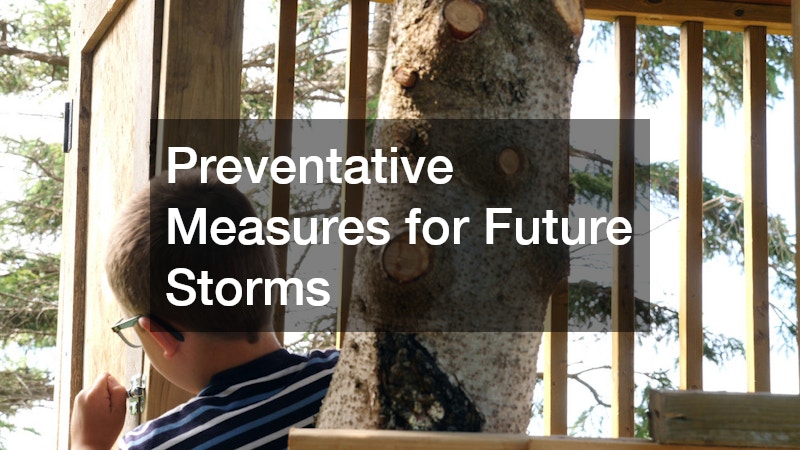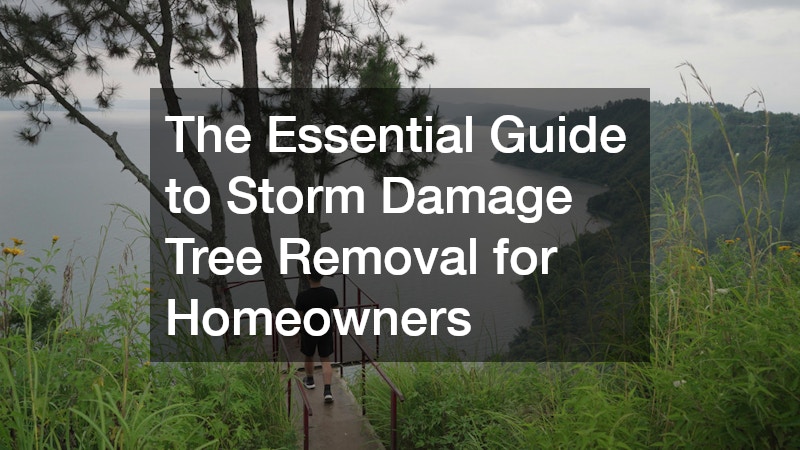Storms can strike suddenly, leaving a trail of destruction in their wake. Among the most common and hazardous consequences are damaged trees, which can pose serious risks to property and personal safety. Understanding the importance of timely storm damage tree removal is crucial for homeowners. This guide will walk you through the key steps of assessing damage, deciding when to act, and choosing the right services to manage storm-damaged trees effectively. By following these steps, you can protect your home, maintain your property’s value, and reduce long-term risks.
How to Assess Storm Damage to Your Trees
Identifying Common Signs of Storm Damage
After a storm, the first step is a thorough inspection of your property. Look for trees with broken branches, split trunks, leaning structures, or exposed roots. Even trees that appear intact may have hidden damage, such as cracks in the trunk or weakened root systems. These issues can worsen over time and increase the likelihood of the tree falling, so early detection is key.
Assessing Immediate Risks to Property and Safety
Next, evaluate which trees or branches could pose an immediate threat to your home, vehicles, power lines, or family members. A large branch overhanging your roof or a leaning tree near your driveway may require urgent attention. Prioritising high-risk trees can prevent further property damage and keep your household safe.
Determining Which Trees Can Be Saved
Not every tree affected by a storm needs to be removed. Some trees may be pruned and allowed to recover, while others may be irreparably damaged. Assess factors such as the extent of structural damage, age, and overall health. Consulting with a certified arborist can provide a professional opinion and help you make informed decisions about which trees are salvageable.
When to Call a Professional Tree Removal Service
Evaluating the Complexity of Tree Removal
Storm-damaged trees can be unpredictable. Large trees, those near power lines, or those with extensive structural damage, present serious risks. Attempting to remove such trees without proper expertise and equipment can be dangerous. Professionals have the training and tools needed to safely handle even the most challenging tree removal scenarios.
Understanding the Risks of DIY Tree Removal
While smaller branches or minor pruning might be manageable for some homeowners, attempting full tree removal on your own is rarely advisable after a storm. Falling branches, chainsaw accidents, and unstable trees can lead to serious injuries or additional property damage. Investing in professional services for storm-damaged trees ensures safety and efficiency.
Finding a Reliable Tree Removal Service
When searching for a tree removal company, look for licensed and insured professionals with experience in storm damage. Ask for references, read online reviews, and confirm that the service can handle the scale of work required. A trustworthy provider will assess the situation, offer a detailed estimate, and execute the removal safely and efficiently.
Insurance and Financial Considerations
How Homeowners Insurance Covers Storm Damage
Many homeowners’ insurance policies include coverage for storm damage to trees, but the extent varies. Policies often cover trees that damage your home or other structures, while fallen trees on open property may not be included. Understanding your coverage can help you plan for potential expenses and maximize your reimbursement.
Establishing a Tree Removal Budget
Tree removal costs depend on factors such as tree size, location, and the complexity of the removal. Obtaining multiple estimates from reputable companies can help you budget appropriately. Factor in both the removal service and any associated cleanup or property repair costs.
Navigating Claims and Reimbursements
If your insurance covers storm damage tree removal, document the damage thoroughly with photos and notes. Keep invoices and receipts for any professional services performed. Communicate clearly with your insurance provider to ensure a smooth claims process and timely reimbursement.
Preventative Measures for Future Storms
The Importance of Regular Tree Maintenance
Regular maintenance, including pruning, trimming, and health assessments, can reduce the risk of severe damage during storms. Removing weak or diseased branches before a storm hits strengthens trees and protects your property.
Implementing Protective Landscaping Strategies
Planting trees away from buildings, selecting storm-resistant species, and maintaining proper spacing can reduce future risks. Strategic landscaping not only enhances property aesthetics but also improves safety during extreme weather events.
Creating an Emergency Response Plan
Develop a plan for quick action after a storm. Identify high-risk trees, emergency contacts for professional services, and steps to secure your property. Being prepared can save time, reduce stress, and prevent accidents when severe weather occurs.
Storm-damaged trees are a serious concern for homeowners, but with careful assessment, timely action, and professional support, the risks can be managed effectively. Understanding the signs of damage, evaluating which trees require removal, and leveraging your insurance coverage ensures safety and minimizes financial impact. Regular tree maintenance and thoughtful landscaping further protect your property in the long term. By following these essential steps for storm damage tree removal, homeowners can confidently maintain their property and respond efficiently to the challenges posed by severe weather.

